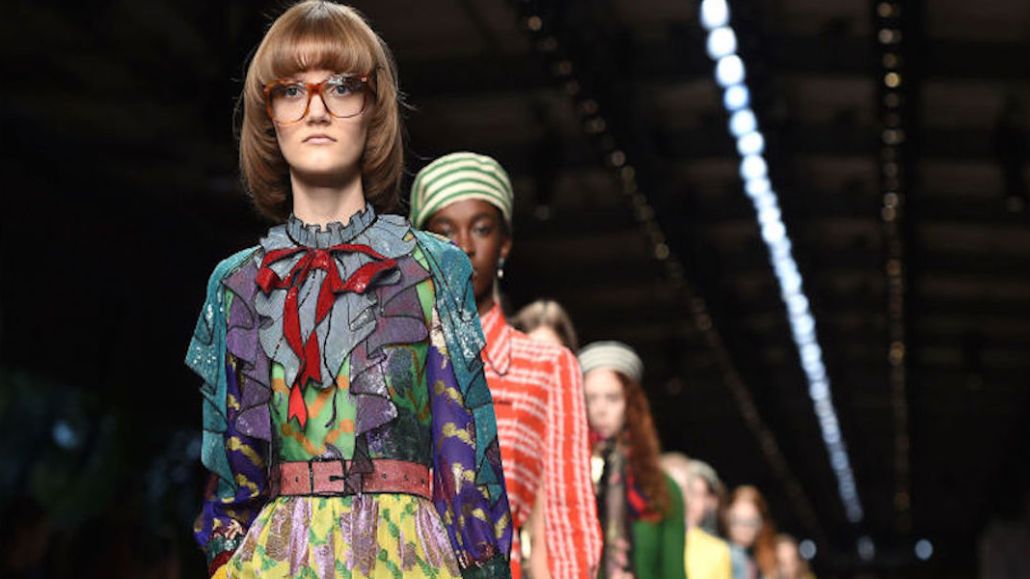How Kering’s sustainability strategy brings its supply chain up to speed

Kering’s sustainability strategy can be boiled down to three main parts: working directly with suppliers to update practices, in order to eliminate waste and pollution across the company’s brands; hiring engineers and researchers to push progress at its dedicated Innovation Labs; and partnering with startups, as well as competitors, to uplift the industry’s progress of sustainability outside the company’s limits.
“When you are in the luxury sector, you have a responsibility because you set the trends,” said Marie-Claire Daveu, the chief sustainability officer and head of international affairs at Kering. “Today, when you’re buying a luxury product, you know it has to have the perfect craftsmanship and quality, but more and more, people are taking into consideration a new criteria — namely, how a brand they’re buying from takes care of people and the planet.”
Kering is in the process of implementing the 10-year plan it launched in 2015 that laid out goals to achieve by 2025, including mapping new compliancies for its supply chain partners around water and energy consumption, reducing the environmental footprint by 40 percent and using sustainable raw materials.
Most critically, though, is cleaning up the supply chain. For luxury brands, supply chain transparency and improvements are becoming table stakes, in order to move more efficiently and sustainably. So the success of Kering’s sustainability strategy is dependent on how willingly, or not, suppliers collaborate. Transparency within the supply chain, often seen as a stepping stone for brands hoping to become more sustainable, has become a trending force in fashion, for direct-to-consumer brands like Everlane to massive fast-fashion companies like H&M.
“The supply chain is really complicated, but it’s a positive step, from a global labor union perspective, to be transparent,” said Christina Hajagos-Clausen, textile and garment director of global union IndustriAll, which has contracted agreements with H&M and Zara. “Customers appreciate it, as well. If you have nothing to hide, you can show it.”
Kering isn’t hinging its sustainability strategy on a promise to be more transparent, because in fashion, Daveu acknowledged, talk of transparency without technical operations behind it easily comes off as greenwashing. But traceability — knowing where every material used in the company comes from — is a top priority for the brand, and it’s both working with its external suppliers and its owned innovation labs to achieve that.
The Clean by Design initiative, launched in 2015, is Kering’s strategy to reduce the environmental impact caused by its suppliers, which are concentrated in Italy and Asia. For brands trying to become more sustainable, getting external suppliers to cooperate is the biggest hurdle to clear, according to company executives who have tried to achieve it.
Kering’s approach: to work with suppliers using plenty of communication and patience. Daveu said conversations around reducing waste and pollution have been going on for a long time, and that the key is to explain what needs to be achieved, as well as why it’s a priority for Kering. Then, the company has to give the suppliers time to comply.
“If you want your partners to work with you and trust you, you cannot say, ‘Reduce your water consumption by 10 percent tomorrow, or else we leave,’” said Daveu. “Our goal is capacity-building, or bringing them to a place where we are sustainable, no matter the scale. To that end, we’re bringing an added value to these suppliers. Sustainability is going to be a competitive advantage — not only for us, but for them, as well.”
Kering works with suppliers to update contracts that set some time limits, but the 10-year plan is a clue as to how long some of these updates will take to be put in place. To push along faster progress elsewhere, the company has built its own innovation labs to promote research around sustainable raw materials, giving designers resources to make their collections environmentally friendly from the get-go. The Materials Innovation Lab, located in Milan, is a resource used across brands housing 2,000 raw materials and fibers. It’s staffed by researchers and engineers who are developing new options. Daveu said there’s no internal pressure on designers to use these materials, but both brand CEOs and creative designers are given briefings on how they can benefit the brand.
Daveu said sustainability priorities and practices differ from brand to brand, depending on size and production cycles. Some Kering-owned brands, though, are adopting the same methods in their own right. Gucci, for one, is opening a Gucci Arts Lab in 2018 to source its own sustainable materials and speed up production.
“This is a step toward internalization of production, especially leather goods,” said Kering CFO Jean-Marc Duplaix. “Over time, there will be better control over product development, sampling and material development.”
As Kering’s sustainability plan is still in its early stages, the company is recruiting an advisory board of millennials to help them stay ahead of the curve on other top-of-mind social and environmental issues. The board is made up of 15 men and women from different countries, one-third of whom are employed at Kering, and they regularly meet with the executive board.
“It’s smart to push our top management to think outside of the box to identify the weak signals we’re sending out as a company, linked to sustainability, to challenge us,” said Daveu. “Sustainability today is not at all an option. It’s a necessity.”
More in Marketing

Best Buy, Lowe’s chief marketing officers explain why they launched new influencer programs
CMOs launched these new programs in response to the growing importance of influencers in recommending products.

Agencies create specialist units to help marketers’ solve for AI search gatekeepers
Wpromote, Kepler and Jellyfish practices aim to illuminate impact of black box LLMs’ understanding of brands search and social efforts.

What AI startup Cluely gets — and ad tech forgets — about attention
Cluely launched a narrative before it launched a tool. And somehow, it’s working.









